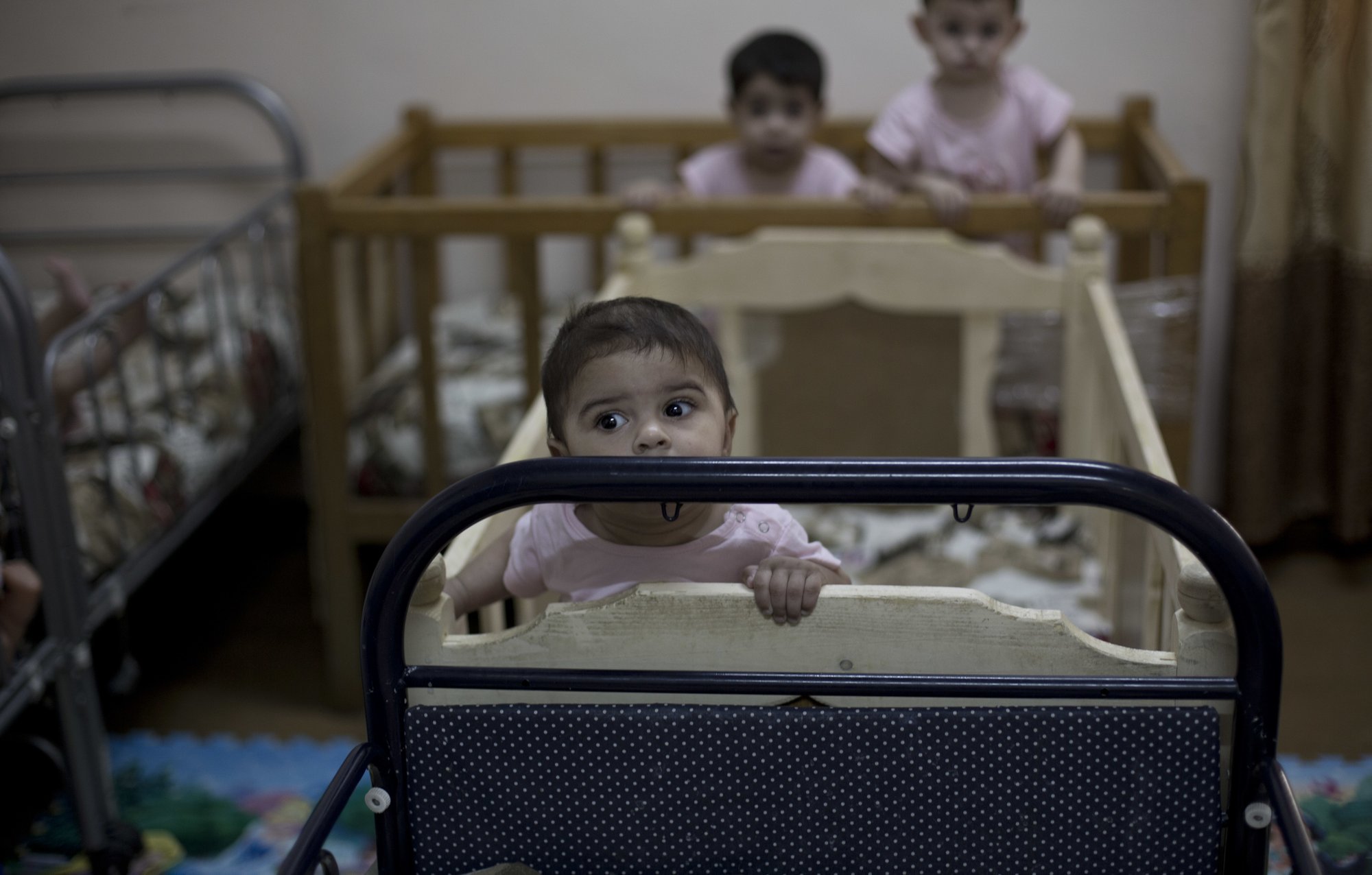
The sun sets as women visit a Yazidi shrine overlooking the Khanke Camp for the internally displaced in Dahuk, Northern Iraq. (Photo: AP)
“My heart bursts from my chest every time I think of leaving her. She is a piece of me, but I don’t know what to do,” she said, speaking to The Associated Press at a camp in northern Iraq for displaced Yazidis.
The woman spoke on condition she be identified only as Umm Maria, or “mother of Maria,” for fear her family and community would find out.
Umm Maria’s torment points to the gaping wounds suffered by Iraq’s Yazidi religious minority at the hands of the Islamic State group. When the militants overran the Yazidis’ northern Iraqi heartland of Sinjar in 2014, they inflicted on the community an almost medieval fate. Hundreds of Yazidi men and boys were massacred, tens of thousands fled their homes, and the militants took thousands of women and girls as sex slaves, viewing them as heretics worthy of subjugation and rape.
The women were distributed among IS fighters in Iraq and Syria and over the following years were traded and sold as chattel. Many women bore children from their captors — the numbers of children are not known, but they are no doubt in the hundreds.
The Nobel Peace Prize this year put a focus on victims of sexual violence and on the Yazidis in particular, when one of the women abducted by IS, Nadia Murad, was named a co-winner of the award.
Many, though not all, of the women have returned home, as the extremist group’s “caliphate” in Iraq and Syria has been brought down. While some of them want nothing to do with babies born of rape and slavery, some, like Umm Maria, want to keep them.
But Yazidi families most often reject the children.
That is a reflection of the deeply entrenched traditions followed by the Yazidi community, seeking to preserve its identity among the mainly Muslim population, many of whom for centuries viewed the ancient faith with suspicion. The Yazidis, who speak a form of Kurdish, keep their community closed off, their rituals little known.
They have always rejected mixed marriages and children fathered by non-Yazidis. In this case, the stain is even greater since the fathers were the same Sunni Muslim radicals who sought to wipe out the community. Under Iraqi law, the children are considered Muslims.
The community has taken a relatively progressive stance toward the mothers. In Iraq’s traditional society, rape can bring stigma on the victim. But the Yazidis’ spiritual leader, Babashekh Khirto Hadji Ismail, issued an edict in 2015 declaring women enslaved by the militants to be “pure,” with their faith intact. The declaration allowed the women to be welcomed back into Yazidi society.
But not the children.
Khidr Domary, a prominent Yazidi activist, acknowledged that the community’s insular traditions need some reform and said the leadership has shown flexibility as it tries to deal with the trauma left by IS, known by their group’s Arabic acronym, Daesh.
He says that in theory mothers can bring the children back to their communities, but they will face intense pressure from family members and neighbors.
“It is difficult, even for the mother, to bring a child to live in our midst when it is possible that his Daeshi father may have killed hundreds of us with his own hands, including relatives of the mother,” he said.
Umm Maria was taken captive along with other women in August 2014, when the militants stormed Sinjar, near the Syrian border. She was eventually taken to Syria as the slave of an IS fighter, whom she knew only by his alias, Abu Turab.

A baby girl stands up in her crib at the Salhiya Orphanage in Baghdad, Iraq. (Photo: AP)
Abu Turab was killed in fighting in 2015. His family sold her for $1,800 to another militant, an Iraqi she identified as Ahmed Mohammed. He took her to Iraq’s Mosul, where she lived with his first wife and their children. Soon after she gave birth to Maria, he too was killed in fighting in 2015.
She was consigned to an IS “guesthouse” where wounded IS fighters received first aid or took a rest from the front lines — and used Yazidi women for sex.
As Iraqi security forces assaulted Mosul, the women at the house were moved from one neighborhood to another to escape bombardment. In the summer of 2017, as the city fell, Umm Maria escaped into government-held territory, though she was injured during the shelling.
At the hospital, an uncle persuaded Umm Maria to give them the child until she healed, promising to return Maria to her afterward.
“Had I known they planned on depositing her in an orphanage, I would have never given her,” she said.
Umm Maria has seen the child — now around 3 years old — only once since. Several months ago, she visited her at the Baghdad orphanage, spending two days with Maria.
“She did not recognize me, but I recognized her,” Umm Maria said. “How could I not? She is a piece of me.”
Many Yazidis see it as more essential than ever for the community to protect its identity at a time when it is struggling for survival. The Yazidis were estimated to number about 700,000 before 2014. Since the IS onslaught, nearly 15 percent are believed to have fled the country, mostly to the West. Nearly half of those still in the country live in camps for the displaced, scattered around northern Iraq.
About 3,000 Yazidis remain missing or in captivity. Of these, experts believe only a third may still be alive.


